AUGUST WILDFLOWERS
9/12/20
Why yes, it is the middle of September. What better time to tell you what flowers you were looking at a month ago, in August? Both the diversity and especially the abundance of flowers was way down in August, maybe because it had been so dry. In addition to the new flowers for August, a few from earlier in the summer were still blooming, including Mock Strawberry, White Clover, Carolina Horsenettle, Smooth Spiderwort, Rough Daisy Fleabane, Bears Foot, May-Pop, Spurred Butterfly Pea, Virginia Dayflower, and Hoary Mountain Mint. Here are the new flowers of August.
Elephant’s Foot (also called Devil’s Grandmother, Elephantopus tomentosus). These small pink flowers are in many places, including along our streets and in moist shaded valleys in the UGA Botanical Gardens. Although the flowers look like they have many petals, they are actually a few petals that are deeply lobed. The flowers occur in clusters, sitting atop three hairy leaves at the ends of stems. The plant grows up to 2 feet tall, with sparsely leaved branches. The stems radiate from a basal circle of large leaves, held flat to the ground.
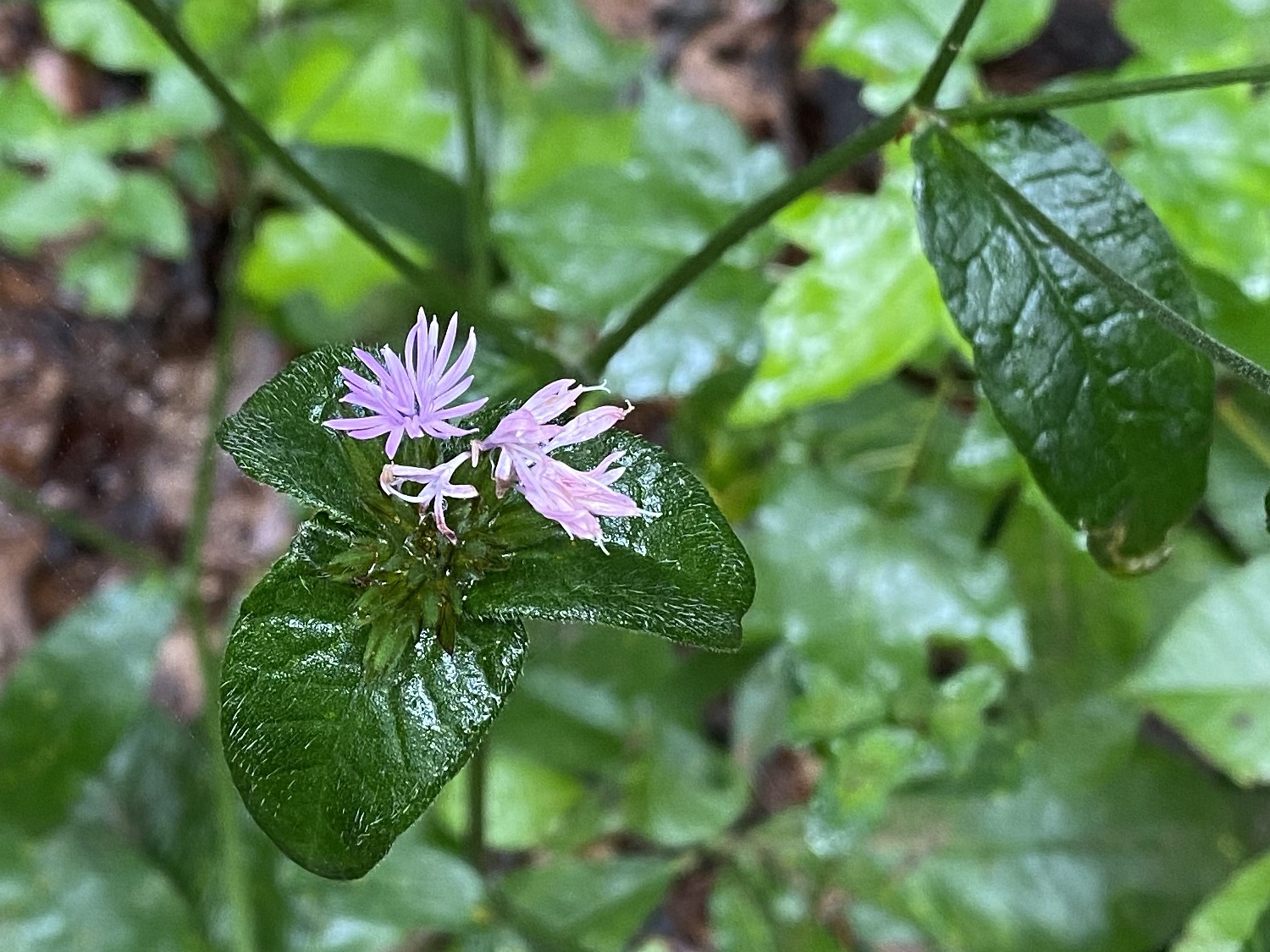
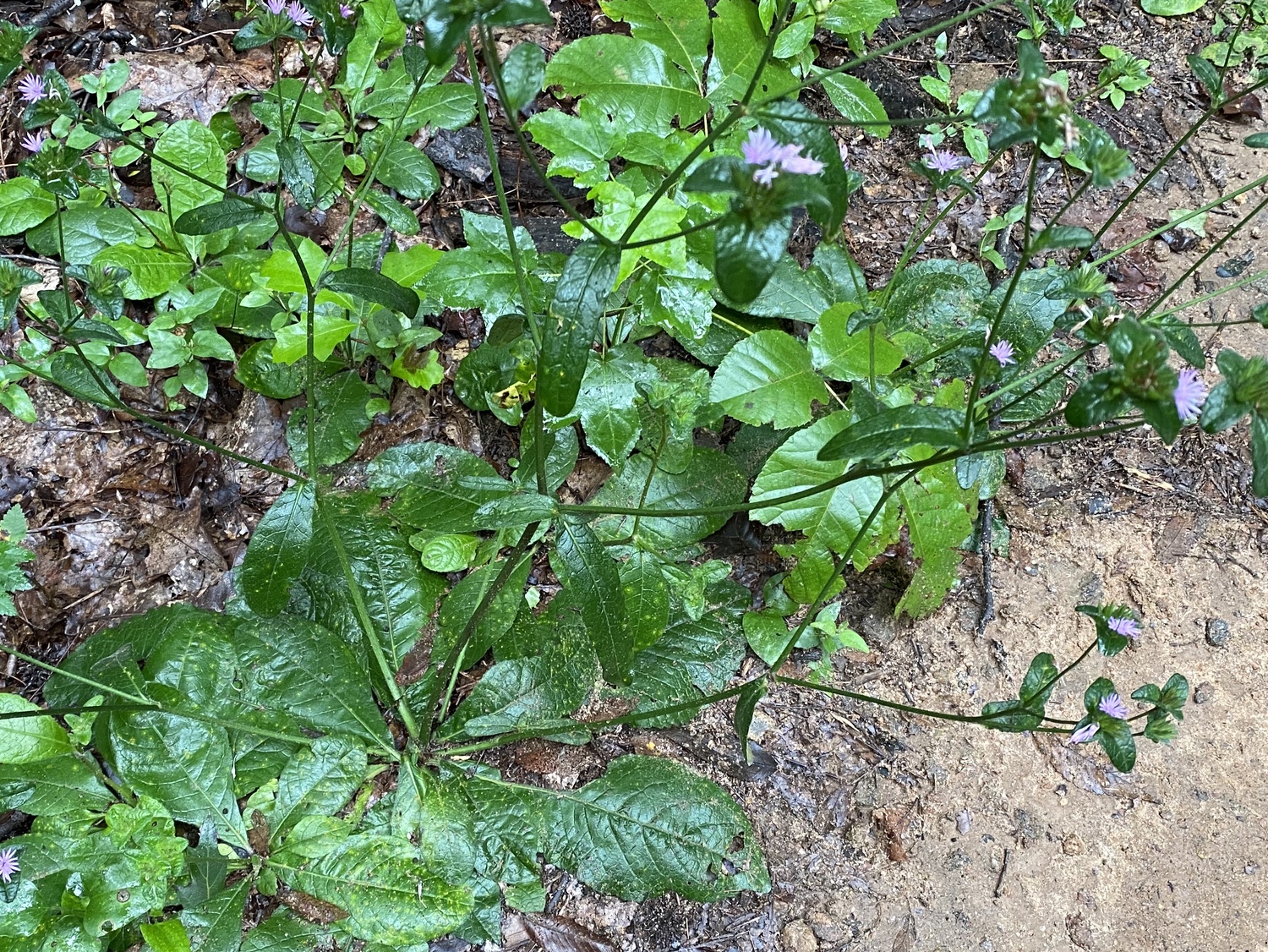
Sweet Autumn Clematis (Clematis terniflora). These white flowers grow on a twining vine with opposite, heart-shaped leaves with parallel veins. I found several along the river at the UGA Botanical Gardens, then noticed them in numerous places along the roadside in Athens. The white flower has four narrow petal-like sepals, with a burst of long white stamens. This is an invasive species from northeast Asia.
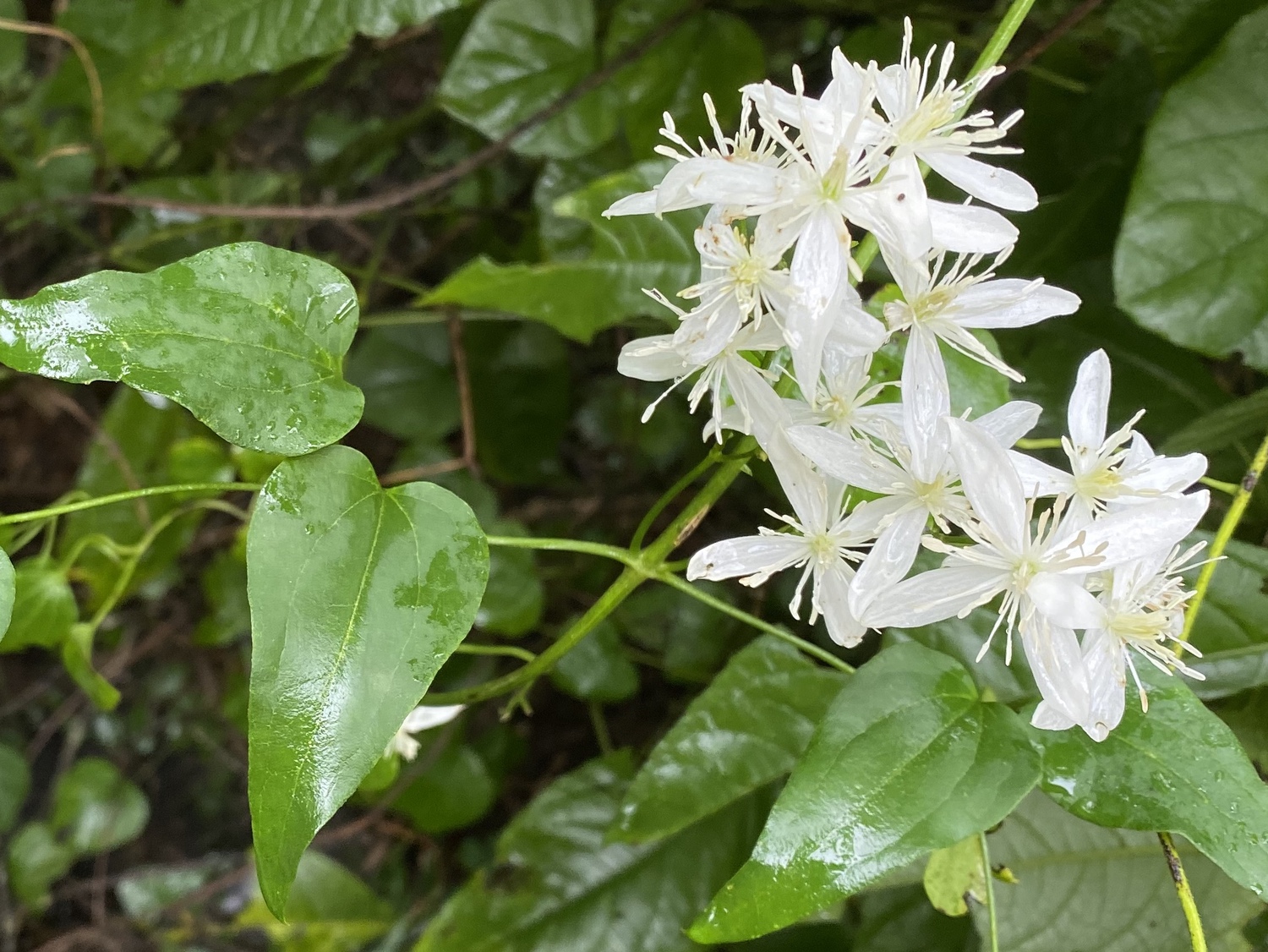
Jewelweed (also called Orange Touch-Me-Not, Impatiens capensis). These small orange spotted tubular flowers were growing on the sandy levee in the UGA Botanical Garden. The elliptic leaves have gently lobed edges. Their great name comes from their habit of explosively ejecting seeds when touched. It’s interesting to me that these are in the same genus as the flowers we plant every year on our deck; the similarity is there, but it’s not immediately obvious.
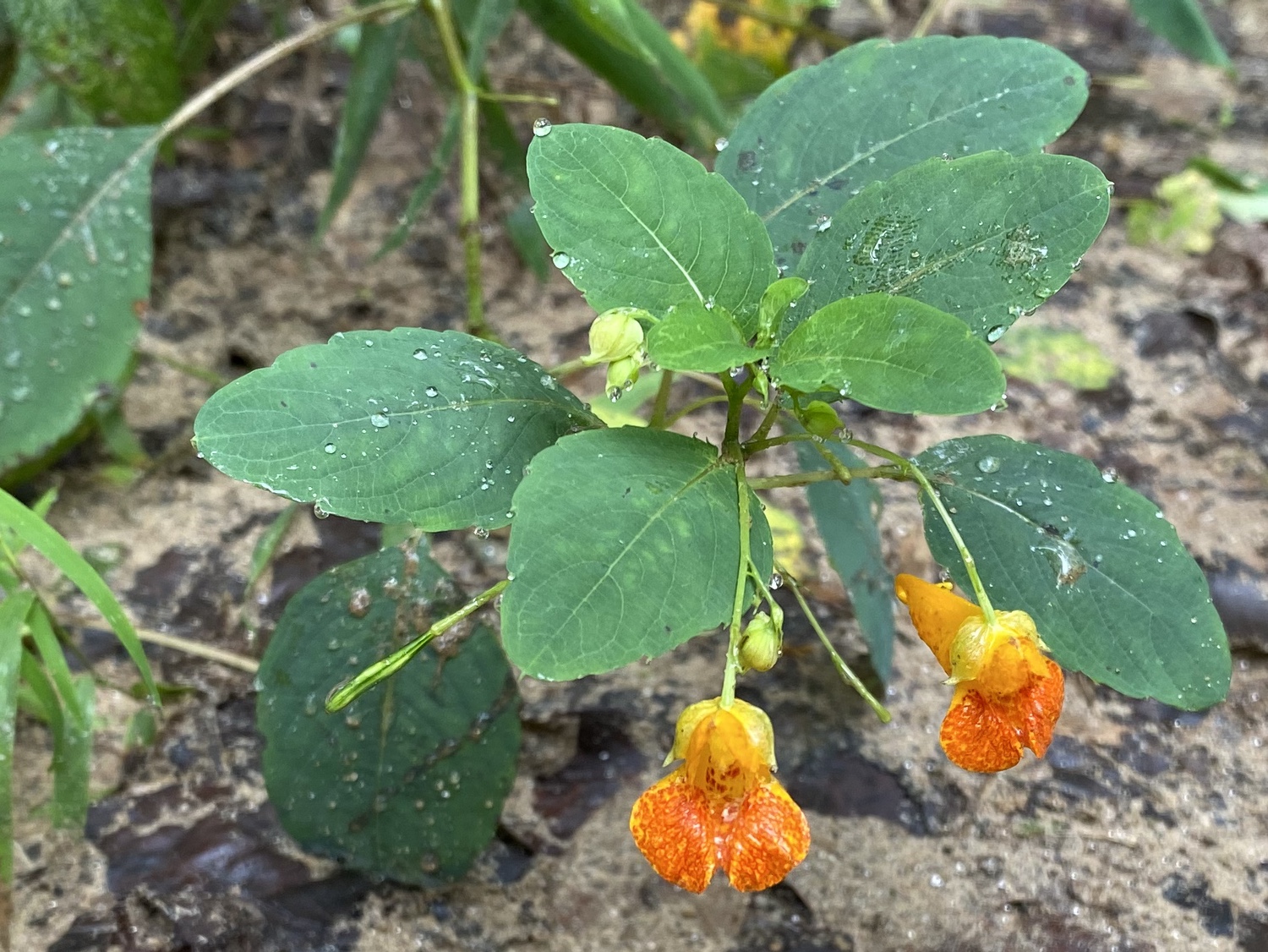
Wingstem Water-Primrose (Ludwigia decurrens). A few of these small yellow flowers were growing on the levee in the UGA Botanical Gardens, at the power-line cut. These have four rounded yellow petals having prominent veins, with four narrow and pointed green sepals visible between the petals. The leaves are long, lanceolate, and alternate, with no apparent stalks. The stem is winged, with two long continuous blades that project from it.
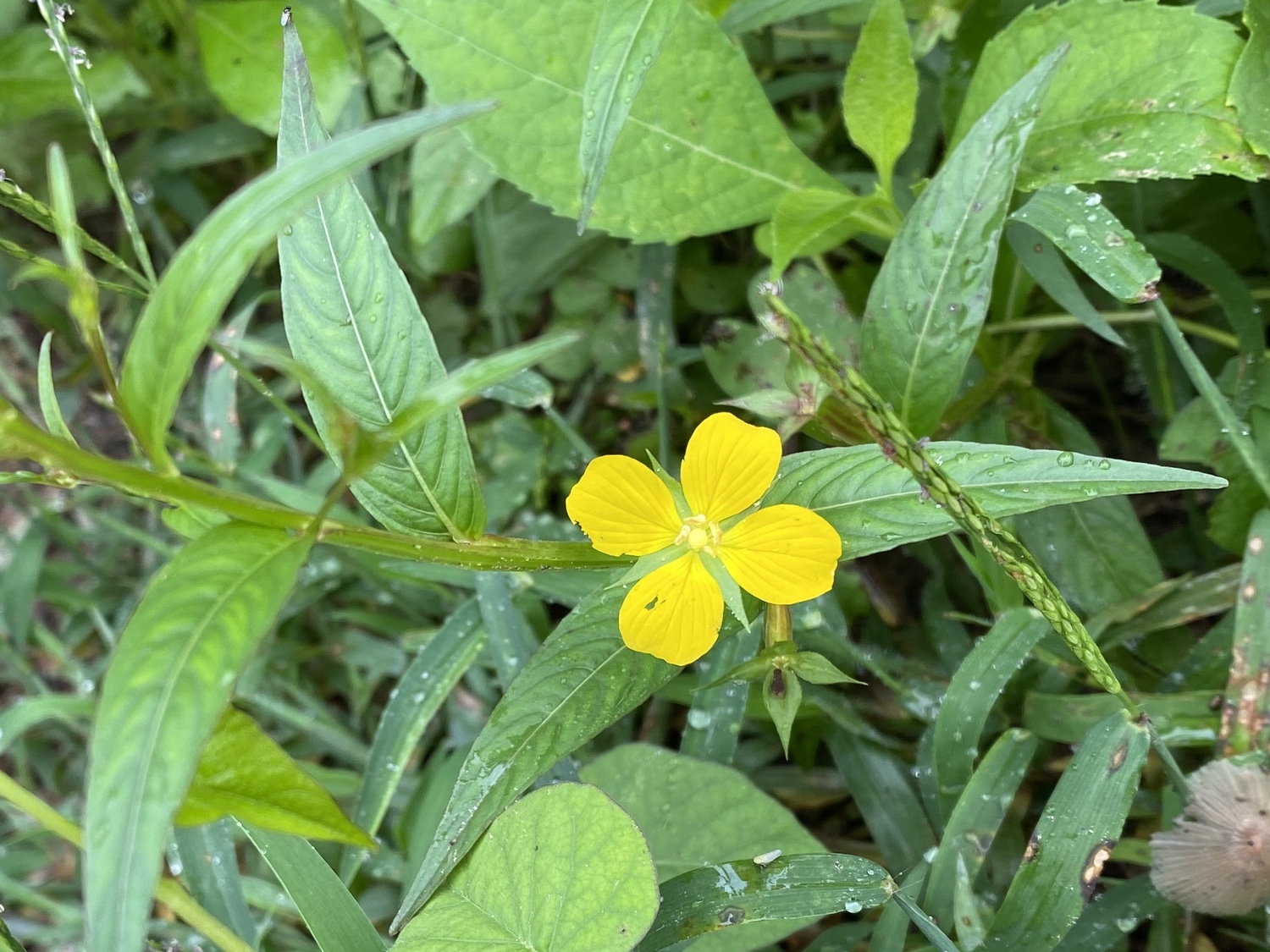
Duck Potato (also called Broad-Leaved Arrowhead, Sagittaria latifolia). These small flowers were attached to a water plant with much larger leaves growing along the edges of the beaver pond/marsh in the UGA Botanical Gardens (where the Orange Trail meets the Middle Oconee River). The flower have multiple yellow stamens and three ruffly white petals, and they sprout from the stem in clumps of three. The large (almost a foot long) spear-shaped leaves are probably the most distinctive part of this water plant. Although Broad-Leaved Arrowhead is more descriptive, the name Duck Potato is irresistable.
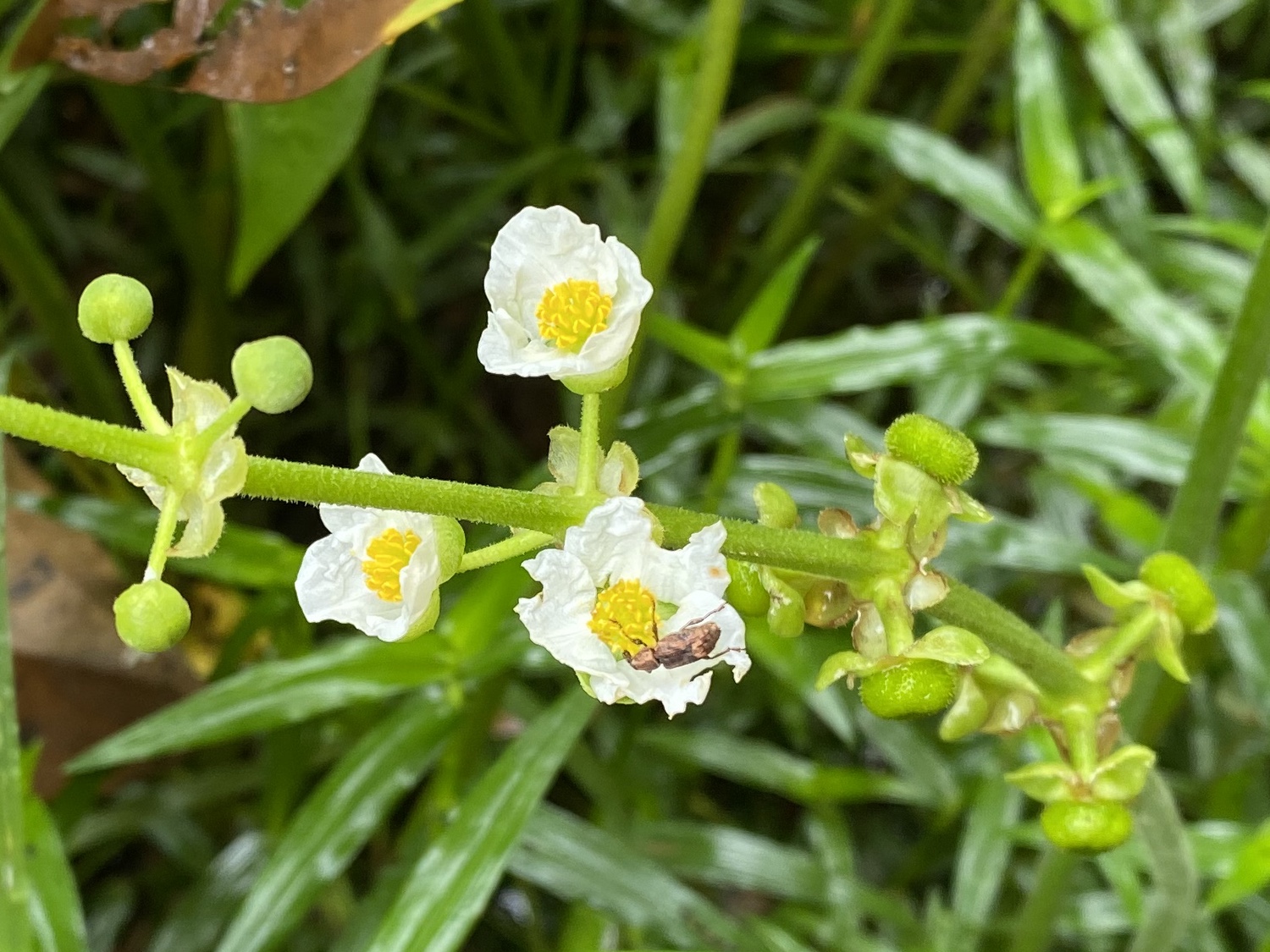
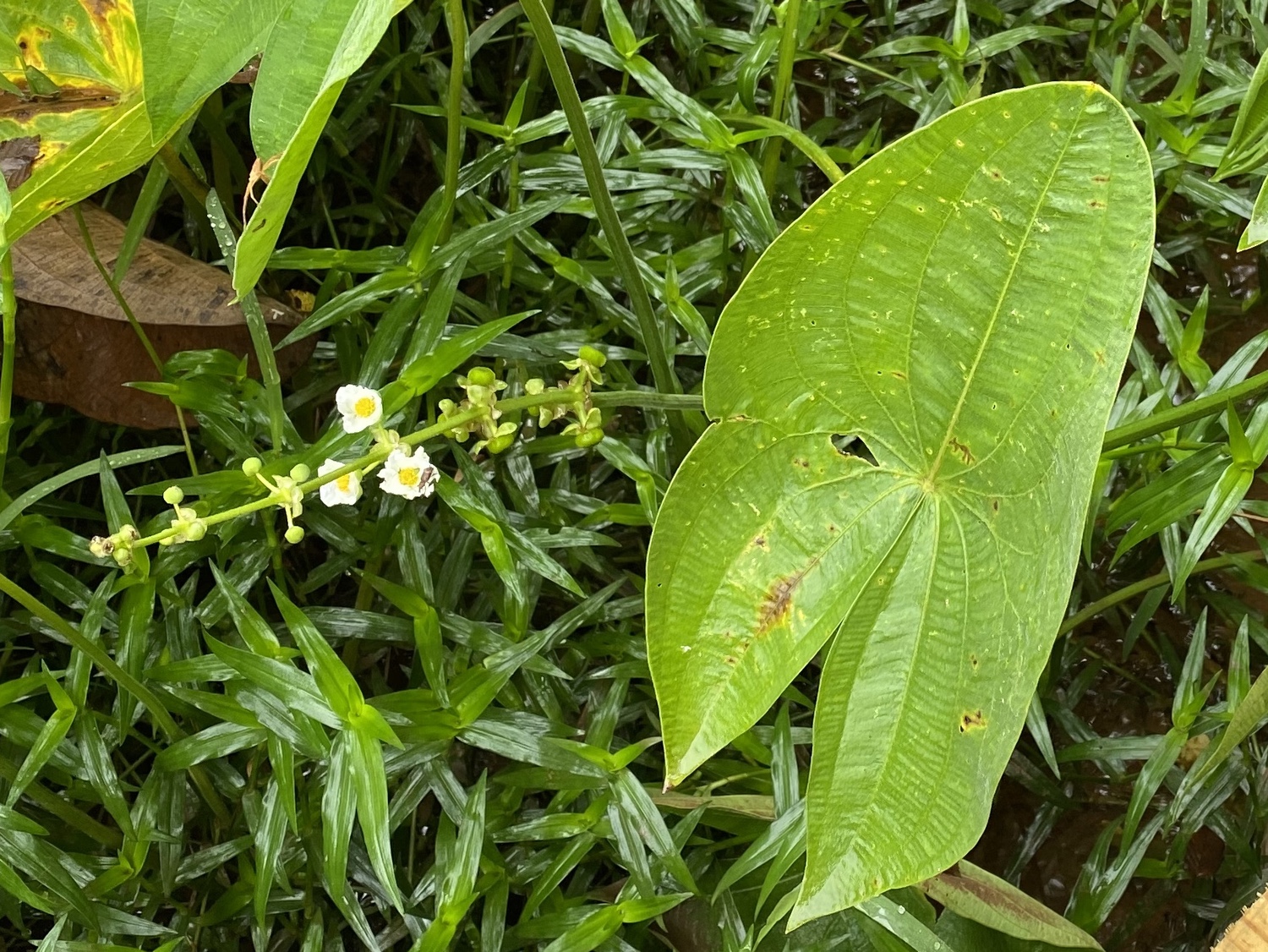
Nits-and-Lice (Hypericum drummondii).These yellow flowers were growing in the power-line cut at the UGA Botanical Gardens. The flowers have five twisted yellow petals, with several short white-tipped anthers. The plant grows about a couple of feet high and consists of many narrowly branching winged stems, with numerous narrow elongate leaves growing directly from the main stems. The leaves are about an inch long, distinguishing this from the closely related species Pineweed (also called Orange-Grass, Hypericum gentianoides).
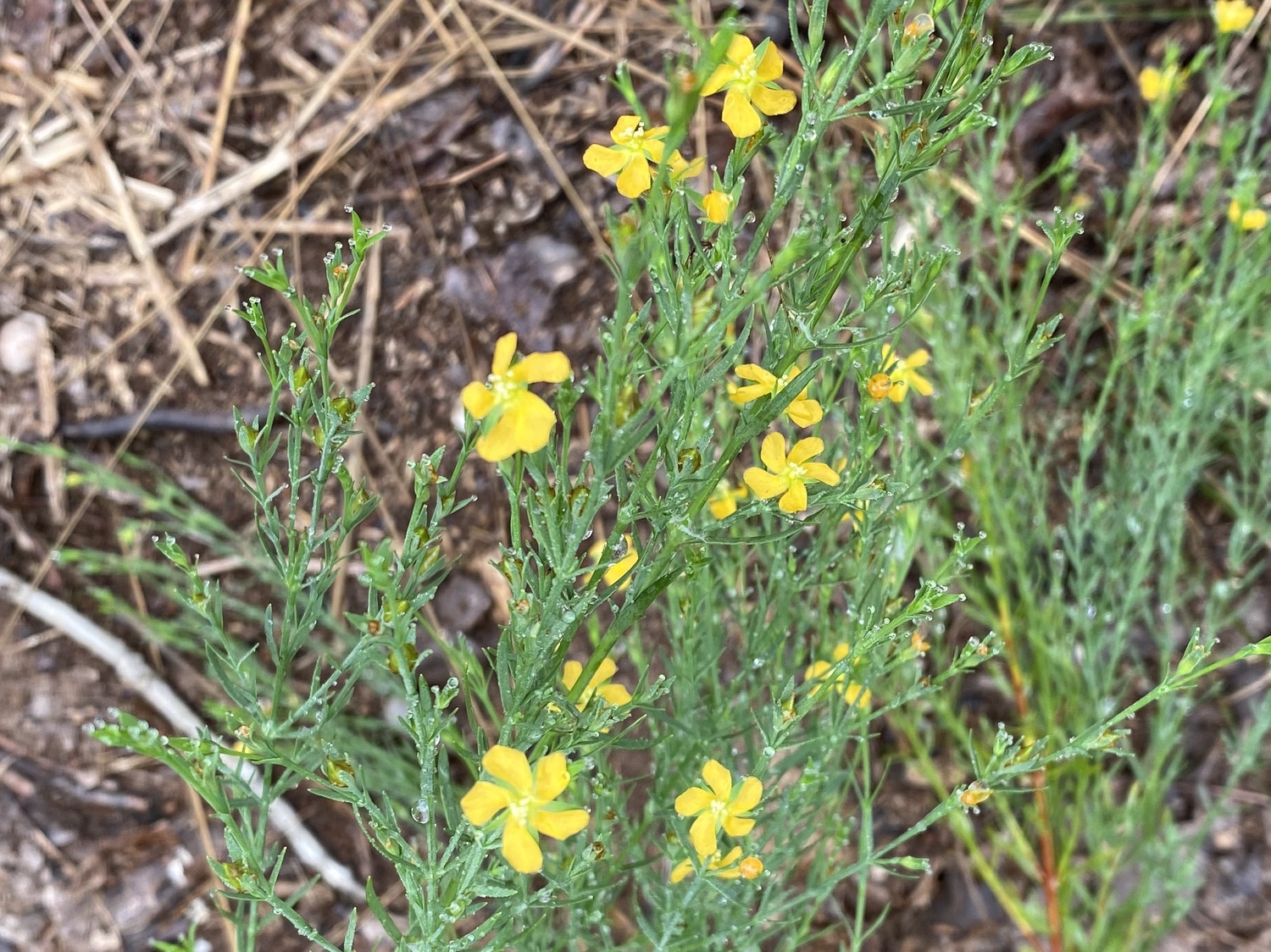
References
Chafin, L.G. 2016. Field Guide to the Wildflowers of Georgia and Surrounding States. The University of Georgia Press, Athens, Georgia.
Duncan, W.H., and M.B. Duncan. 1999. Wildflowers of the Eastern United States. The University of Georgia Press, Athens, Georgia.
Miller, J.H., E.B. Chambliss, N.J. Loewenstein. 2015. A Field Guide for the Identification of Invasive Plants in Southern Forests. USDA Forest Service, Southern Research Station, General Technical Report SRS-119, 126 p.